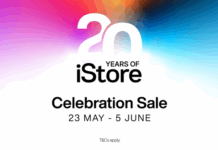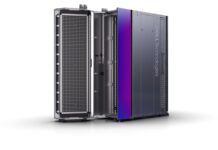As technology evolves and data sets grow, marketing is changing, adapting and in some cases becoming automated. Understanding where technology and marketing meet – the MarTech stack – is one of the best ways to scale a business and transform big data into actionable insights. Here are a five technology trends that will shape marketing in 2021.
- Scaling business with AI
Artificial intelligence (AI) is more than a marketing tool. It’s an incredible way to automate tedious tasks. From content distribution to storing digital assets, chatbot software and services, AI has revolutionized customer service and can even support personalization. Airbnb uses AI in its MarTech stack to personalize offers based on customer data around search, but also to assess if a guest is ‘trustworthy’. LinkedIn uses AI to customize job recommendations and share better content in a feed personalized around interests. According to a new survey from Marketing Insider Group, 78% of online users said that personally relevant content increases their purchase intent for a brand’s products and services.
- Analytics to predict success
It’s no secret that customers prefer personalization. Predictive analytics – sometimes referred to as computerized decision making – can take a strategy to the next level. Being able to predict consumer behaviour, understand how to achieve more with less and turn ideas into actionable insights is massive. Keeping up and ahead of consumer trends requires data and the ability to track and forecast marketing campaigns is where MarTech works best.
Predictive analytics can also help to create a customer experience that feels seamless and holistic. Online stores use shopping data to predict when a customer will buy something again (e.g. “Need milk? Order now!”), and on-demand services such as Netflix or Spotify integrate what users have watched, flagged or listened to in order to personalize the entire customer journey. It’s contextual, future-thinking marketing that has been shown to work.
- Intelligent assistants
Do companies and brands need a chatbot? Here’s what we know: Chatbots are excelling at customer service and driving consumer engagement beyond expectations. Recent research from Juniper shows that they could drive $112 billion in retail sales by 2023. In 2019, chatbots also saved businesses an hefty $300,000 on average. A good chatbot can streamline sales, service and marketing communications. More than that, a chatbot provides what feels like one-on-one conversation with a brand or business. Email inboxes are cluttered with promotional mailers which means trying to collect customer data from a survey may not necessarily work. Chatbot data is MarTech gold since it opens the door for personalization and helping companies understand what their customers really want – as well as what they’re struggling with.
- Can you show me how?
In times past, a business deal could be completed with a handshake. Store visits, face-to-face meetings and demos helped product sales. With MarTech, this is still possible despite the coronavirus pandemic where one-on-one virtual experiences, in lieu of in-person demos, have become an effective mechanism to successfully market to customers.
Interactive (or live) demos embrace technology by allowing remote selling. They’ve also become a critical part of the MarTech stack because they facilitate an immersive experience that can be personalized – a recent Salesforce study found that 72% of business buyers expect vendors to personalize experiences to meet their needs. Interactive demos are where digitalization, personalization and remote work come together.
- Embracing the entire customer journey
Marketing budgets are shrinking globally. In order to scale, companies will need to look towards MarTech solutions to help them innovate and connect different parts of an organization together. It’s about working smarter and faster, but also about picking the right technology to fit the workflow. One piece of software can no longer represent an entire marketing stack. There is also no excuse for standardization – next-generation dynamic features are what users expect. So, for businesses to make the most from their customer data – to create more effective campaigns that convert and get real value from the MarTech stack – it’s crucial to understand how to effectively integrate the data being collected.
For more information about Mobiz and MarTech, visit www.mobiz.co
By Greg Chen, CEO of Mobiz




























